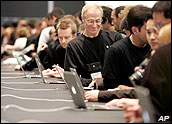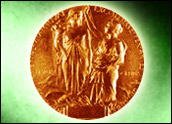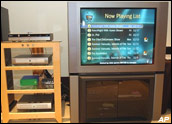
Here’s a fun fact for your cubicle-side coffee chat: That Scotch tape on your desk is good for more than just sticking together pages of a TPS report. Turns out it can also generate X-rays.
Scientists at the University of California in Los Angeles have found that plain old office tape can create enough X-rays to take a hospital-style image. But before you freak out and enter a tape-purging rage, you should know that it can only happen within a vacuum.
Sound strange? Read on.
An Unlikely Discovery
The researchers, who we can only assume had too much time between experiments, somehow discovered the tape’s hidden power at a UCLA lab this year. Silly as it may have seemed, their findings stuck, so to speak, and were published this week in the journal Nature.
“At some point, we were a little bit scared,” researcher Juan Escobar says in the report.
There’s no need to fear, though; while scientists were surprised by the news, they say it adheres to basic principles of physics.
“It’s a phenomenon called ‘triboluminescence,'” James M. Hevezi, chair of the American College of Radiology’s Medical Physics Commission, told TechNewsWorld.
That phenomenon — the generation of light through rubbing and thereby breaking the bonds in a crystal — is nothing new. Remember the old Wint-O-Green Life Saver spark in the dark trick? It’s the same deal.
“You might try an experiment where you go into a dark closet and pull Scotch tape off a regular roll,” Hevezi suggested. “You can see some flashes of light at the point where the tape leaves the roll. That’s the triboluminescence phenomenon,” he said.
(For the record, our generic brand of “transparent adhesive tape” did not lead to any light creation. It did, however, lead to a silly-looking writer standing in a dark room with tape all over his arms.)
Air Affairs
So why, then, could the full X-ray effect only be produced within a vacuum? It’s not due to an obsessive need for cleanliness in the lab. Rather, it’s a result of the low amount of energy being produced in the tape-peeling process. Air alone is enough to weaken that energy to the point where it’s undetectable — a factor that causes Hevezi to question how easily the finding could be applied in a practical setting.
“I’m sort of concerned that the intensity — that is, the number of X-rays and the energy, the penetrating power of the X-rays — probably wouldn’t be high enough to produce a usable system,” he observed. “Nonetheless, I think it’s worth these folks doing more research on it.”
Such research could, in theory, uncover ways to create X-rays without external power. If the energy could be harnessed, the possibilities could be immense.
“It might be useful as a portable X-ray unit away from electricity,” Hevezi noted. “Or in developing countries — it might be used there, if they can produce a practical instrument.”
As for your own mundane taping endeavors, you can Scotch away without worry. The low-intensity level means your workspace tape dispenser isn’t likely to kill or otherwise harm you (random eye-jabbings aside). And hey, you never know — some other seemingly insipid object sitting on your desk might just hold science’s next uncovered secret.
“That’s how science is, I guess,” Hevezi laughed. “You put two disparate things together, and sometimes you get something out of it that’s unknown.”





















































